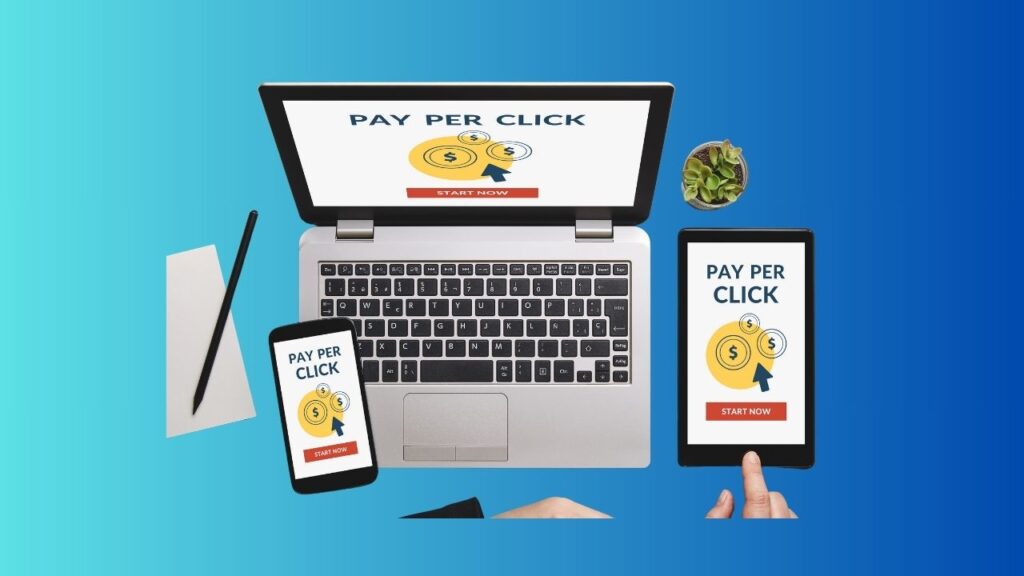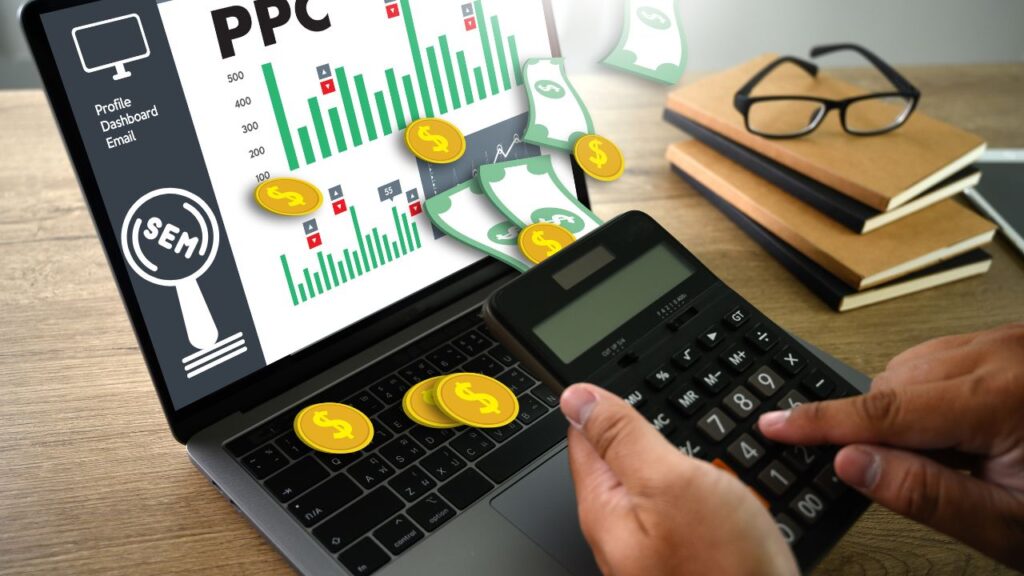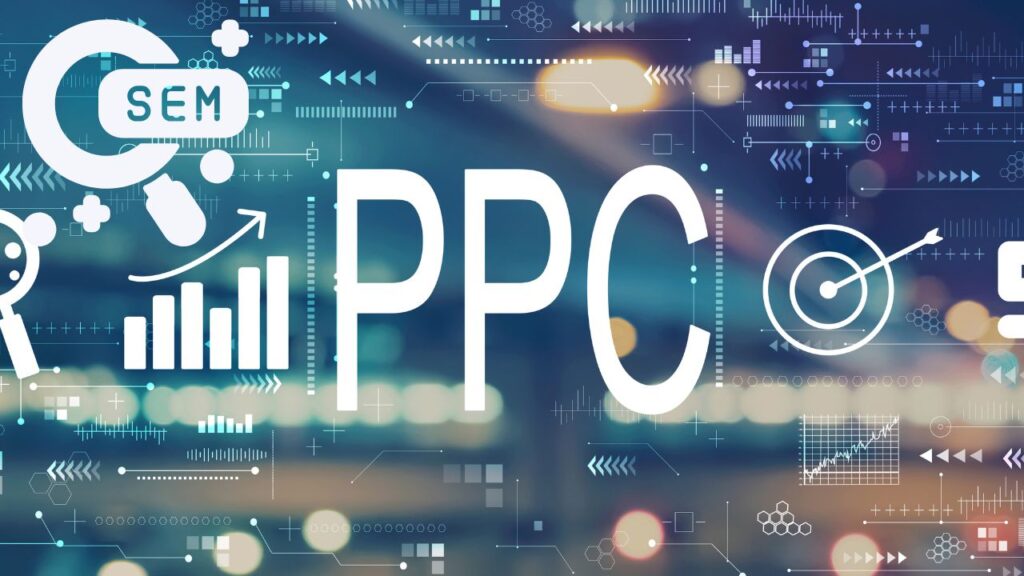Does SEM Include PPC? Understanding the Relationship
In the realms of digital marketing, terms like SEM and PPC often come into play. To understand if SEM includes PPC, we must first delve into what these acronyms stand for. SEM, or Search Engine Marketing, is a broad term that refers to paid advertising efforts on search engines. PPC, or Pay-Per-Click, is one of the most common types of advertising strategies found within SEM.
Does SEM Include PPC, when you engage in PPC advertising, you essentially pay each time a user clicks on your ad. This model is used predominantly in search engine advertising where you bid on keywords. So, how does this relationship work?

How SEM and PPC Interact
To break it down:
- SEM encompasses various marketing techniques: SEM is not limited to just paid ads; it also includes SEO practices like keyword research and content optimization to improve a site’s visibility in organic search results.
- PPC is a method of SEM: Pay-Per-Click is a specific strategy falling under the SEM umbrella. It’s a form of online advertising that aims to generate traffic to your website by paying a publisher when the ad is clicked.
- Both Strategies Work Towards a Common Goal: Both SEM and PPC campaigns aim to increase visibility in search engine results pages and drive targeted traffic to your website.
The Components of SEM
Understanding SEM can help clarify how PPC fits in. SEM can be broken down into two main segments:
| Segment | Description |
|---|---|
| Paid Search Advertising | Includes PPC campaigns, where ads are displayed on search engine results based on keyword bids. |
| SEO (Search Engine Optimization) | Involves optimizing your website to improve organic rankings on search engines without direct payment. |
The Benefits of Combining SEM and PPC
Utilizing both SEM and PPC can offer substantial benefits for your marketing strategy:
- Increased Visibility: Combining PPC ads with your SEO efforts enhances your overall visibility on search engines.
- Better Insights: Running both strategies provides valuable data. You can learn which keywords perform best and refine your approach accordingly.
- Cost-Effectiveness: Using SEM strategies lets you allocate your budget wisely. PPC allows for instant traffic while SEO requires time but offers long-term benefits.
PPC Strategies within SEM
To make PPC effective, consider the following strategies:
- Keyword Research: Identify relevant keywords that your audience is searching for.
- Ad Quality: Ensure your ad is compelling with a strong call-to-action and relevant landing page.
- A/B Testing: Experiment with different ads to see which performs better.
- Monitoring and Optimization: Continuously analyze your PPC campaigns and adjust as necessary to improve performance.
Common Misunderstandings About SEM and PPC
Many marketers and business owners often confuse the two concepts. Here are a few common misunderstandings:
- All SEM is PPC: Not true! SEM includes both PPC and SEO tactics.
- PPC is Only for Search Engines: While it’s most common in search ads, PPC can also appear on social media platforms and other websites.
- You Don’t Need SEO if You Use PPC: This is misleading. PPC can drive immediate traffic, but SEO is essential for long-term visibility and credibility.
SEM does indeed include PPC as one of its vital components. By understanding their relationship, you can better strategize your marketing efforts. both SEM and PPC into your strategy can lead to increased visibility, insights into consumer behavior, and ultimately, higher returns on your investment.
The Differences Between SEM and SEO
When exploring digital marketing, many come across terms like SEM and SEO. While both aim to increase traffic to websites, they are distinct in their approach, strategy, and outcomes. Understanding these differences can significantly impact your marketing efforts.
What is SEM?
Does SEM Include PPC? Search Engine Marketing (SEM) refers to the paid strategies used to increase visibility in search engine results. It encompasses all paid tactics that drive traffic and leads via search engines. Here’s what you should know:
- Paid Advertising: SEM includes pay-per-click (PPC) advertising, where advertisers pay for their ads to appear in searches. Platforms like Google Ads allow targeting specific keywords.
- Immediate Results: Since SEM relies on paid placement, it can generate immediate visibility and traffic once a campaign is launched.
- Control of Budget: Advertisers have control over their budgets. They can set daily limits and adjust bids based on performance.
What is SEO?
Search Engine Optimization (SEO) is the process of optimizing your website content to achieve higher organic rankings in search results. It focuses on earning traffic through unpaid methods, which can take time to see results. Here’s a closer look:
- Organic Traffic: SEO builds organic traffic through quality content, backlinks, and technical enhancements.
- Long-Term Results: Unlike SEM, SEO efforts can take longer to show results, but they tend to be more sustainable over time.
- Cost-Effective: Although it may require a significant time investment, SEO can be less costly in the long run compared to continuous SEM spending.
Key Differences Between SEM and SEO
| Aspect | SEM | SEO |
|---|---|---|
| Cost | Paid ads (PPC) | Generally free, except for resources invested in content and SEO tools |
| Speed | Immediate visibility | Takes time to rank |
| Traffic Type | Paid traffic | Organic traffic |
| Long-Term Viability | Ends when budget runs out | Continues to attract traffic long-term |
| Targeting | Keyword targeting and audience demographics | Keyword targeting through organic content optimization |
Choosing Between SEM and SEO
Does SEM Include PPC? the decision to use SEM, SEO, or both depends on your goals. If you need immediate leads or traffic, SEM could be the right choice. It’s especially beneficial when launching new products or running time-sensitive promotions. PPC campaigns can be customized to target specific demographics and locations, maximizing the chances of reaching the right audience quickly.
However, if you’re looking for a long-term strategy, SEO is essential. It builds authority and trust with search engines. As your website gains rankings, traffic can increase without ongoing costs associated with ads.

Complementing Strategies
Does SEM Include PPC, using both SEM and SEO together can yield the best results. While SEM brings immediate traffic, SEO builds a foundation for sustained visits. A well-rounded approach can optimize your website for both paid and organic search, allowing you to capture audience attention in multiple ways.
Both methods can also help gather valuable data. For instance, running PPC campaigns can provide insights into which keywords convert best. This information can inform your SEO strategy, guiding content creation to target high-performing keywords.
Final Thoughts
Does SEM Include PPC, understanding the differences between SEM and SEO is crucial for effective digital marketing. Each has its own benefits, and choosing the right approach depends on your specific needs and objectives. Whether you focus on one method or leverage both, having a clear strategy will help you generate meaningful traffic and achieve your business goals.
How PPC Campaigns Enhance SEM Strategies
Pay-per-click (PPC) campaigns play a significant role in enhancing search engine marketing (SEM) strategies. By integrating PPC with other SEM efforts, businesses can achieve better visibility, increased traffic, and higher conversions.
PPC mainly focuses on driving immediate traffic through paid ads, while SEM encompasses a broader range of strategies including SEO (search engine optimization) and content marketing. The synergy between these two can yield impressive results.
When you run a PPC campaign, you gain instant access to the search engine results page (SERP). Your ads appear at the top, allowing users to see your offerings even before they scroll down to organic listings. This prominence can drastically improve brand awareness and relevance.
Here are key ways PPC campaigns enhance SEM strategies:
- Immediate Visibility: With PPC, you can secure top spots on SERPs almost instantly, while SEO efforts can take time to show results.
- Targeted Advertising: PPC allows you to target specific demographics, interests, and behaviors to reach your ideal audience effectively.
- Data-Driven Insights: Through PPC campaigns, you can gather extensive data on user behavior, which can help refine your SEO strategy.
- Testing Ground: PPC serves as an excellent tool for A/B testing ad copies, landing pages, and overall messaging that can also guide SEO efforts.
- Budget Flexibility: You can adjust your PPC budget quickly based on performance, allowing you to focus on what works best.
Does SEM Include PPC, One of the most significant advantages of PPC is the wealth of data it provides. Analyzing this data can reveal trends and user preferences, which can then inform both your PPC and organic strategies. For example, if certain keywords perform particularly well in your ads, focusing your SEO efforts on those keywords can be a wise strategy.
Combining PPC and SEO allows you to create a full-funnel marketing approach. While PPC attracts immediate visitors, SEO nurtures long-term traffic growth. This holistic strategy caters to users at different stages of their buying journey, boosting overall engagement and conversion rates.
Let’s consider some statistics to illustrate the effectiveness of combining these two strategies:
| Strategy | Average CTR (Click-Through Rate) | Average Conversion Rate |
|---|---|---|
| PPC Ads | 3.17% | 2.35% |
| Organic Results | 1.91% | 3.75% |
| PPC & Organic Combined | 4.83% | 6.25% |
This table clearly shows that when PPC and organic efforts are combined, the overall effectiveness of your SEM strategy increases significantly. Not only does the combined click-through rate (CTR) improve, but the conversion rates soar as well. This relationship indicates that users who see both ads and organic listings are more likely to click and convert.
Inclusively, having visibility on both fronts establishes credibility. Many users often trust brands that appear in both PPC and organic listings since they perceive them as more reputable. This perception can lead to a higher likelihood of clicks and conversions.
Remarketing through PPC is a fantastic strategy that can further augment SEM efforts. Users who have previously visited your website can be targeted specifically, helping to keep your brand at the forefront of their minds. This can make a notable impact on return visits and conversions.
In essence, incorporating PPC campaigns into your SEM strategies amplifies visibility, drives targeted traffic, and results in valuable user insights. By leveraging both paid and organic strategies, businesses can not only enhance their search engine presence but also maximize their overall marketing results.
Measuring the Success of SEM and PPC Efforts
Does SEM Include PPC, measuring the success of SEM and PPC efforts is crucial for any business looking to improve their online visibility and drive conversions. Understanding how well your campaigns are performing allows you to make informed adjustments that can lead to better results. Let’s dive into the key metrics and strategies that can empower you to effectively measure your SEM and PPC success.
Key Metrics for SEM and PPC Success
When assessing the effectiveness of SEM and PPC campaigns, several key metrics come into play. Below are some essential factors to monitor:
- Click-Through Rate (CTR): This metric tells you how many people clicked on your ad compared to how many saw it. A higher CTR indicates that your ad is compelling and relevant to users.
- Conversion Rate: This metric is the percentage of visitors who take a desired action after clicking on your ad, such as making a purchase or signing up for a newsletter.
- Cost Per Click (CPC): CPC shows how much you pay for each click on your ad. Understanding your CPC helps you manage your budget and expenditure effectively.
- Quality Score: Google assigns a Quality Score based on the relevance of your ad, keywords, and landing page. A higher score can lead to lower costs and better ad placements.
- Impressions: This number tells you how many times your ad was displayed. High impressions with low clicks might indicate that your ad needs tweaking.
- Return on Ad Spend (ROAS): This is the revenue earned for every dollar spent on advertising. It helps you evaluate the profitability of your PPC campaigns.
Tools for Monitoring SEM and PPC Performance
Several tools can assist you in measuring these metrics effectively. Utilizing these tools can streamline the reporting process:
- Google Ads: This is one of the most comprehensive tools for managing PPC campaigns. You can track performance, optimize budgets, and see detailed reports.
- Google Analytics: Integrating Google Analytics with your SEM efforts provides insights on website traffic, user behavior, and conversion tracking.
- Bing Ads: Similar to Google Ads, Bing Ads allows businesses to create PPC campaigns on the Bing network.
- SEMrush: This tool offers competitive insights and PPC analysis, helping you understand your performance compared to others in your industry.
Interpreting the Data
Once you have collected data from these tools, the next step is analyzing the information to determine success. Look beyond the numbers to understand what they mean:
- Identify Trends: Watch for patterns over time. Are your CTR and conversion rates increasing? Are there specific keywords that consistently perform better?
- Segment Your Data: Break down your metrics by demographics, location, and time of day. This helps identify which segments perform best.
- A/B Testing: Experiment with different ad copies, headlines, and images. Use A/B tests to compare which versions yield better results.
Adjusting Your Strategy
Interpreting your data allows you to fine-tune your strategy. Here are some ways to enhance your SEM and PPC efforts based on the data:
- Refine Your Keywords: Focus on high-performing keywords and explore negative keywords to eliminate irrelevant traffic.
- Adjust Your Bids: Increase bids for high-performing ads or reduce them for those that are underperforming.
- Optimize Landing Pages: Ensure that your landing page is relevant to your ad and offers an excellent user experience.
- Rotate Ads: Test multiple variations of your ads to find out which resonate best with your audience.
On Evaluation and Metrics
Does SEM Include PPC, measuring the success of your SEM and PPC efforts is an ongoing process. By focusing on key metrics, utilizing powerful tools, and continuously adjusting your strategy, you can improve your online marketing results. Keep an eye on your data and ensure you adapt to changing circumstances to maximize the effectiveness of your campaigns.
Arming yourself with this information will not only enhance your current campaigns but will establish a solid framework for future SEM and PPC endeavors, leading to sustained success.
Best Practices for Combining SEM and PPC for Maximum ROI
Combining search engine marketing (SEM) and pay-per-click (PPC) advertising can elevate your online presence and significantly enhance your return on investment (ROI). By leveraging both strategies effectively, you can ensure that your advertising dollars are well-spent. Here are some best practices to achieve maximum ROI through this combination.
Understand the Relationship Between SEM and PPC
Does SEM Include PPC, SEM encompasses all marketing strategies aimed at boosting your visibility on search engines, including both organic and paid methods. PPC, on the other hand, is a specific paid advertising approach within the SEM umbrella. By understanding how these two work together, you can optimize your strategy to achieve better results.
Keyword Research
Effective keyword research is fundamental for both SEM and PPC. Here are some guidelines to enhance your efforts:
- Use Tools: Platforms like Google Keyword Planner, SEMrush, and Ahrefs can help you identify high-traffic keywords.
- Focus on Long-Tail Keywords: These are less competitive yet can drive targeted traffic. For example, instead of just “shoes,” consider “best running shoes for flat feet.”
- Analyze Competitors: Look at what keywords your competitors are targeting and adjust your strategy accordingly.
Optimize Ad Copy
Your ad copy plays a significant role in attracting clicks. Here are some tips:
- Be Clear and Concise: Use straightforward language to convey your message quickly.
- Include a Call to Action: Encourage users to take action with phrases like “Shop Now” or “Learn More.”
- Test Variations: A/B test different headlines and descriptions to find the most effective combinations.

Landing Page Optimization
After users click your ad, the landing page must convert them into customers. Ensure your landing pages are optimized in the following ways:
- Relevance: Your landing page content should match the keywords and ad copy. This builds trust and encourages conversion.
- Fast Loading Times: A slow website can deter potential customers. Aim for a load time of under three seconds.
- Mobile Optimization: Ensure your landing pages are mobile-friendly, as many users will be accessing them through their smartphones.
Utilize Negative Keywords
Negative keywords prevent your ads from appearing in irrelevant searches. This approach saves budget and improves your click-through rate (CTR). Here’s how to make the most out of negative keywords:
- Regular Review: Continuously monitor search terms to identify irrelevant keywords.
- Prioritize Specificity: The more specific your negative keywords, the better your ad placements will be.
- Utilize Keyword Match Types: Leverage broad, phrase, and exact match types to refine your targeting.
Budgeting and Bidding Strategies
An effective budget and bidding strategy can enhance your ROI. Consider the following:
- Set Budget Limits: Clearly define daily and monthly budgets for both SEM and PPC campaigns.
- Adjust Bids Based on Performance: Increase bids for high-performing keywords and decrease for those underperforming.
- Utilize Automated Bidding: Use tools such as Google Ads’ Smart Bidding to optimize bids in real-time.
Track Performance with Analytics
Regularly monitoring your campaigns is vital to understand what works and what doesn’t. Utilize these strategies:
- Use Google Analytics: Track visitor behavior to gauge the effectiveness of your campaigns and landing pages.
- Measure ROI: Calculate the ROI by comparing the cost of your SEM and PPC with the revenue generated from them.
- Adjust Strategies: Based on performance data, adapt your keywords, ad copy, and budgets to maximize results.
Maintain Consistency Across Channels
To create a cohesive online presence, ensure consistency in your messaging, branding, and user experience across the various channels you use. This approach can increase trust and encourage conversions.
Incorporate these best practices aimed at maximizing your ROI when combining SEM and PPC. By effectively integrating both strategies, you can enhance your online visibility and drive more conversions. The key lies in continuous monitoring and adapting your approach based on data-driven insights.
What Do SEM Ads Look Like | Top notch strategy in 2025 << Learn more >>
Conclusion
Understanding the relationship between SEM and PPC is crucial for anyone looking to enhance their online marketing efforts. SEM, or Search Engine Marketing, indeed encompasses PPC, or Pay-Per-Click advertising. This synergy allows businesses to utilize both paid and organic strategies in their online presence. While SEM focuses on the broader spectrum of search engine visibility, PPC serves as a targeted approach that can yield immediate results.
Does SEM Include PPC? The nuances between SEM and SEO highlight the importance of creating a balanced strategy. SEO aims for organic growth over time, while PPC can drive traffic instantly. Leveraging PPC campaigns within your SEM strategy can help improve visibility and conversion rates, giving your business a competitive edge.
Measuring the success of both SEM and PPC is fundamental to refining your strategies. Key performance indicators like click-through rates, conversion rates, and return on investment provide valuable insights into what is working and what isn’t.
Implementing best practices for effectively combining these strategies ensures that you maximize your return on investment. Focus on thorough keyword research, compelling ad copy, and A/B testing to optimize your campaigns.
By recognizing how SEM includes PPC and how these elements work together, you can craft a robust online marketing strategy. With the right approach, you’ll engage your audience, drive traffic, and ultimately achieve your business goals while staying ahead in an ever-evolving digital landscape.
FAQ
Is PPC part of SEM
Pay-per-click (PPC) advertising is an integral part of search engine marketing (SEM), serving as one of its most targeted and measurable components. While SEM encompasses a broader range of strategies, including organic optimization and paid tactics, PPC focuses specifically on driving immediate traffic through paid ads on search engines like Google or Bing. Together, these approaches ensure businesses can attract the right audience, leveraging both short-term results and long-term brand visibility.
Is PPC always related to SEM
Pay-per-click (PPC) advertising is a subset of search engine marketing (SEM), but the two terms are not entirely interchangeable. While SEM encompasses all strategies to improve visibility in search engine results, including both paid ads (PPC) and organic SEO techniques, PPC specifically refers to the paid advertising model where advertisers pay for each click. Understanding this distinction helps businesses tailor their digital marketing strategies more effectively, ensuring they leverage the right tools for their goals.
Does SEM include Google Ads
Search Engine Marketing (SEM) encompasses various strategies to promote websites and increase visibility on search engine results pages. One of the key components of SEM is Google Ads, a powerful advertising platform that enables businesses to display targeted ads based on keywords, audience demographics, and more. While SEM can include other platforms and techniques, Google Ads often plays a central role due to its expansive reach and robust tools for driving measurable results.
What comes under SEM
Search Engine Marketing (SEM) encompasses a range of strategies aimed at improving a brand’s visibility on search engine results pages. It includes paid advertising methods like pay-per-click (PPC) campaigns, keyword-targeted ads, and shopping ads that attract traffic by bidding for top positions. Additionally, SEM involves continuous analysis, optimization, and budgeting to ensure a high return on investment (ROI) in a competitive online marketplace.
Is SEO free and SEM paid
SEO (Search Engine Optimization) is often considered “free” because it primarily involves optimizing website content and structure to rank higher in search engine results without direct payment to the search engines. However, it requires significant time, effort, and expertise to implement effectively, making it an investment in long-term organic growth. On the other hand, SEM (Search Engine Marketing) is a paid strategy where businesses bid on keywords to display ads on search engine results pages, offering more immediate visibility but requiring ongoing financial investment.

